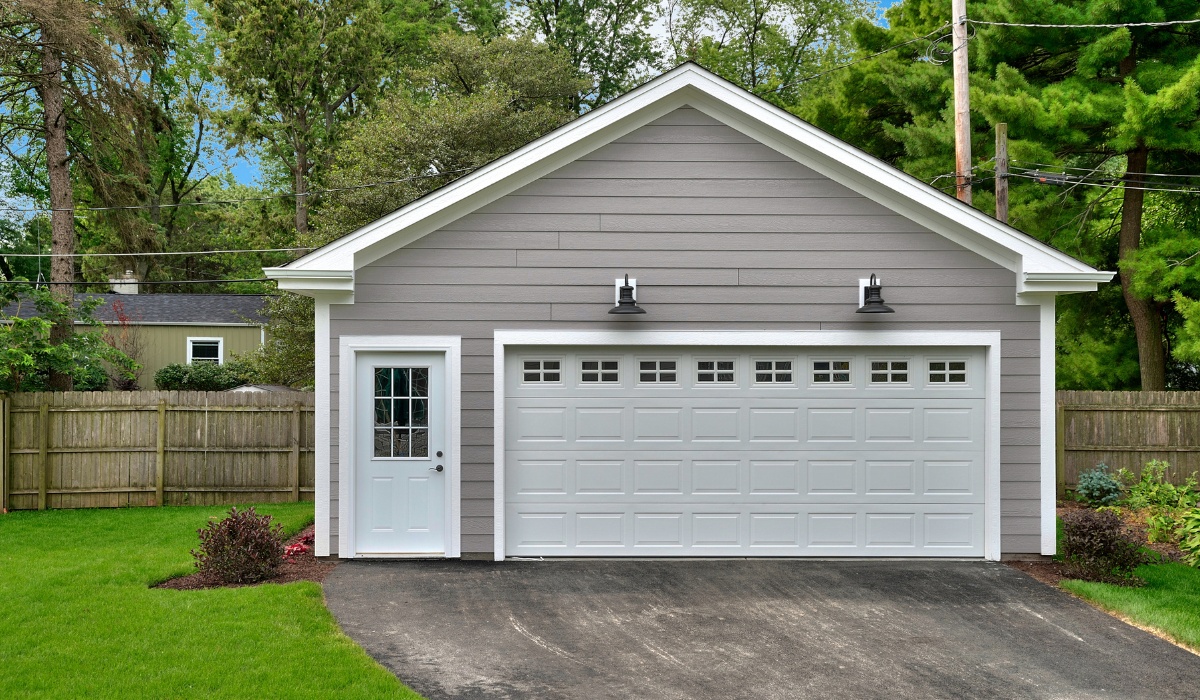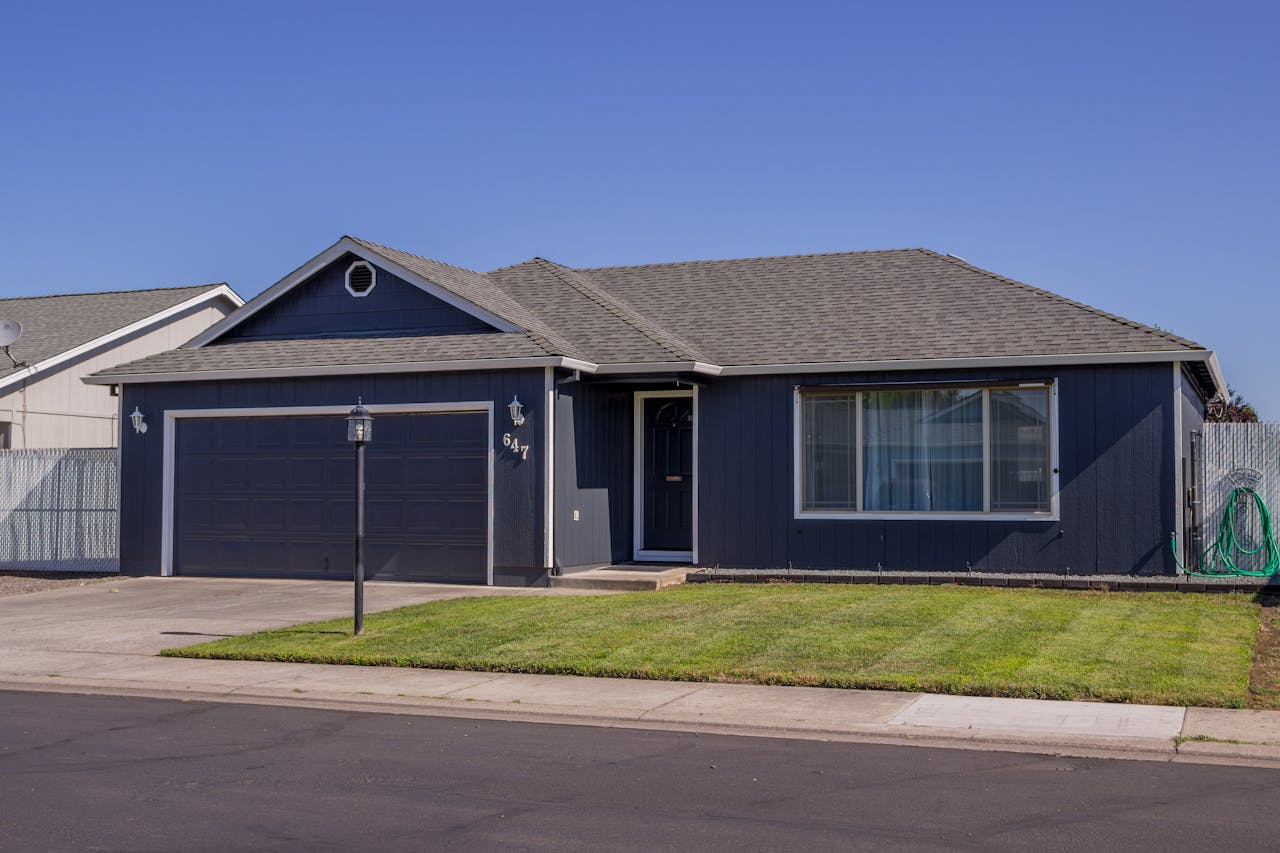Is your garage door acting up? Whether it's a stubborn opener, a broken panel, or a door that's completely off track, a malfunctioning garage door can be a major headache. This comprehensive guide will walk you through common garage door issues, DIY repair solutions, when to call a professional, and the costs involved, empowering you to tackle the problem head-on.
Common Garage Door Issues
Garage doors, while robust, are subject to wear and tear. Understanding common problems is the first step towards effective repair. From simple adjustments to more complex fixes, knowing what to look for will save you time and money. Identifying the source of the problem helps determine whether a DIY fix is possible or if you need to contact a professional garage door service. Common issues include broken panels, doors that have come off the track, and problems with the springs, which are critical for smooth and safe operation. Regular maintenance, such as lubrication and inspection, can prevent many of these issues.
Broken Panel
A broken garage door panel is a common problem, often caused by accidental impacts or general wear and tear. The signs include visible cracks, dents, or even a completely detached section. Replacing a damaged panel can sometimes be a DIY project; however, more extensive damage might require the expertise of a professional garage door repair technician. Safety is paramount; never attempt repairs on damaged sections unless you're confident in your abilities. Consider professional assistance if the damage compromises the structural integrity of the door.
Signs of a Broken Panel
Look for cracks, dents, or holes in the panels. A panel that's sagging or loose is another clear indicator. If the door is making unusual noises when opening or closing, a broken panel could be the culprit. Don't ignore any signs of damage, as a small problem can quickly escalate into a larger and more costly repair.
Panel Replacement Steps
Replacing a garage door panel requires careful removal of the damaged section, followed by installing a new one. This may involve removing screws, bolts, and possibly even hinges. Ensure you use the correct replacement panel to ensure a proper fit and maintain the door's balance. If you are uncomfortable with any aspect of this process, seeking professional help is the best course of action to prevent further damage or injury.
Off Track Door
A garage door that's come off track can be frustrating, but it's often a fixable problem. This usually occurs due to an obstruction, forceful opening or closing, or wear on the track. Identifying the specific point where the door derailed is key to successful realignment. Ignoring this problem can lead to further damage, making the repair far more extensive and expensive.
Causes of Doors Coming Off Track
Obstacles in the track, such as debris or ice, are common causes. Forced opening or closing, especially when the door is frozen, can also lead to derailment. Over time, the rollers or tracks themselves might wear out, leading to misalignment. Regular lubrication of the tracks is important preventative maintenance to help avoid this issue.
How to Realign Your Garage Door
Gently lifting the door to realign the rollers within the track is often sufficient. You'll need to carefully examine the tracks to determine the exact point where the door came off, and reposition the door into the track. Use caution to avoid pinching your fingers or damaging the door further. If you are unable to fix the problem yourself, calling a garage door technician is the safe course of action.
Garage Door Spring Issues
Garage door springs are essential for lifting and lowering the door smoothly and safely. These springs are under high tension, making repair or replacement a potentially dangerous job. Never attempt spring repairs unless you have the experience and proper safety equipment. Damaged or broken springs are a major safety hazard.
Importance of Springs
Extension springs and torsion springs are vital components of garage door systems. They bear the weight of the door, enabling smooth operation. Broken or malfunctioning springs can cause the door to fall unexpectedly, causing significant damage and potential injury. This is an area best left to professionals unless you have specific training and expertise.
How to Replace a Garage Door Spring
Replacing a garage door spring is a highly specialized task. It requires specific tools, safety precautions, and a thorough understanding of spring tension. Due to the potential dangers involved, it's strongly recommended to leave this job to experienced professionals. A professional garage door repair service will have the expertise and equipment to handle this safely and efficiently.
Types of Garage Doors
Choosing the right garage door can significantly impact your home's curb appeal and energy efficiency. Sectional doors, roller doors, and custom designs offer various styles, materials, and features. Understanding the differences will help you select a door that meets your needs and budget. Consider factors such as insulation, security, and maintenance requirements when making your choice.
Sectional Doors
Sectional doors are a popular choice, known for their smooth operation and space-saving design. They consist of several hinged sections that fold upward when opened. These doors offer good insulation and security, and come in a wide range of materials and finishes.
Roller Doors
Roller doors are known for their compact design and robust construction. They consist of a single panel that rolls up and winds around a drum. These doors are highly durable and provide excellent security.
Custom Doors
Custom garage doors offer unparalleled flexibility in design and customization. They allow you to create a door that perfectly matches your home's architectural style. These doors are often made from high-quality materials, and can be tailored to specific needs.
DIY Garage Door Repairs
For minor issues, DIY repairs can save money and time. However, always prioritize safety. Never attempt repairs on components under high tension, like springs. Assess your skills before undertaking any project; if you're unsure, call a professional. Having the right tools is critical for success.
Essential Tools for Repairs
Basic tools like screwdrivers, pliers, and a wrench are often sufficient for minor adjustments. A lubricant for the tracks and rollers is essential for smooth operation. Safety glasses and gloves are critical safety precautions for all repair work.
Step-by-Step Repair Guides
Many online resources offer step-by-step guides for common repairs. Videos can be especially helpful for visualizing the process. Always ensure you understand the steps completely before starting any repair work. Take your time and prioritize safety.
When to Call a Professional
Complex repairs, such as spring replacement or major panel damage, should always be handled by professionals. Safety is paramount, and professional technicians have the skills and equipment to handle these situations safely and effectively. They also have the experience to diagnose problems quickly and efficiently.
Identifying Complex Issues
If the problem involves springs, cables, or significant damage, call a professional. Any situation posing a safety risk requires professional assistance. Don't hesitate to contact a professional if you're unsure about a repair.
Choosing the Right Service Provider
Check online reviews and compare prices before selecting a service provider. Look for technicians with experience and proper licensing. Inquire about warranties and guarantees on their work. Choosing the right professional ensures the job is done properly and safely.
Costs of Garage Door Repair
The cost of garage door repair varies widely depending on the issue and the type of service required. Minor adjustments are generally less expensive than major repairs or replacements. DIY repairs can save money, but improper repairs can lead to additional costs down the line.
Average Pricing for Common Repairs
The cost of repairing a broken spring can be significant, typically ranging from hundreds to several hundred dollars. Panel replacement costs vary based on material and complexity. Lubrication and minor adjustments are relatively inexpensive. Getting multiple quotes from different service providers is recommended to find competitive pricing.
Cost Comparisons for DIY vs Professional Services
While DIY repairs can be cost-effective, factor in the potential cost of mistakes. A professional repair, despite the higher initial cost, provides peace of mind and avoids potential costly errors. Consider the value of time and expertise when deciding between DIY and professional services. The added value of a warranty might also influence your decision.
FAQs about Garage Door Repair
Q: What are common signs my garage door needs repair?
A: Unusual noises, difficulty opening or closing, broken panels, springs, or a door that is off-track are common signs.
Q: How much does garage door repair typically cost?
A: Costs vary widely depending on the problem, from minor adjustments costing little to major repairs involving hundreds of dollars.

Q: Can I repair my garage door myself?
A: Minor repairs are often manageable for DIY enthusiasts, but complex issues such as spring repairs require professional help.
Q: When should I replace my garage door?
A: Consider replacement if repairs are becoming too frequent or costly, or if the door is severely damaged https://canvas.instructure.com/eportfolios/3508665/shanernra112/ultimate-guide-to-garage-door-repair-and-installation-in-2025 or outdated.
In conclusion, tackling garage door problems effectively requires a blend of understanding, careful assessment, and informed decision-making. Whether you choose a DIY approach for minor issues or enlist a professional for complex repairs, remember that safety always comes first. By following the advice in this comprehensive guide, you can keep your garage door operating smoothly for years to come. Don't let a broken garage door disrupt your daily routine – get it fixed today!
